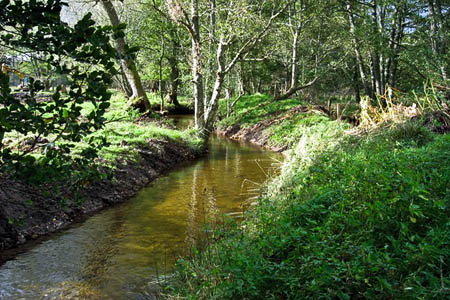A Cairngorms stream that was straightened to provide land drainage has been transformed back to its meandering course to help wildlife thrive.
The Logie Burn on the Muir of Dinnet national nature reserve was at some time in the past channelled into a straight course, which led to sediment moving faster and farther.
This meant the burn, on the Scottish Natural Heritage reserve, was able to support fewer wild plants and animals.
The Dee Catchment Partnership carried out the work to restore the burn to its meandering route, using well tested techniques for restoring rivers.
The new ‘design’ allows for plants to trap more sediment in the burn. This means that any flooding will be in a part of the reserve where it will benefit wildlife and reduce sediment getting into the lochs, without affecting nearby farmers.
Land drainage has been used in Scotland for centuries but the benefits that it brought for forestry and farming down the years were rarely good for wildlife.
Quick drainage may also increase the risk of flooding downstream, and the sediment may damage the gravel beds where fish such as salmon need to breed, as well as affecting the water quality of lochs into which the burns run.
Reserve manger Catriona Reid said: “Since last autumn when the works were completed, the burn has started to look a lot more natural. Dead trees, snapped off by the wind, have fallen into the burn and will provide hiding places for young fish, while nearby ‘scrapes’ have filled with water and will provide feeding areas for wading birds and breeding areas for dragonflies
“The habitat here should continue to improve and benefit wildlife in years to come.”
The project was supported by SNH, Scottish Environment Protection Agency, Dinnet & Kinord Estate, River Restoration Centre, James Hutton Institute and River Dee Trust.
The Muir of Dinnet reserve, which includes the Burn o’Vat, lies just to the East of Ballater, on the eastern edge of the Cairngorms national park.
